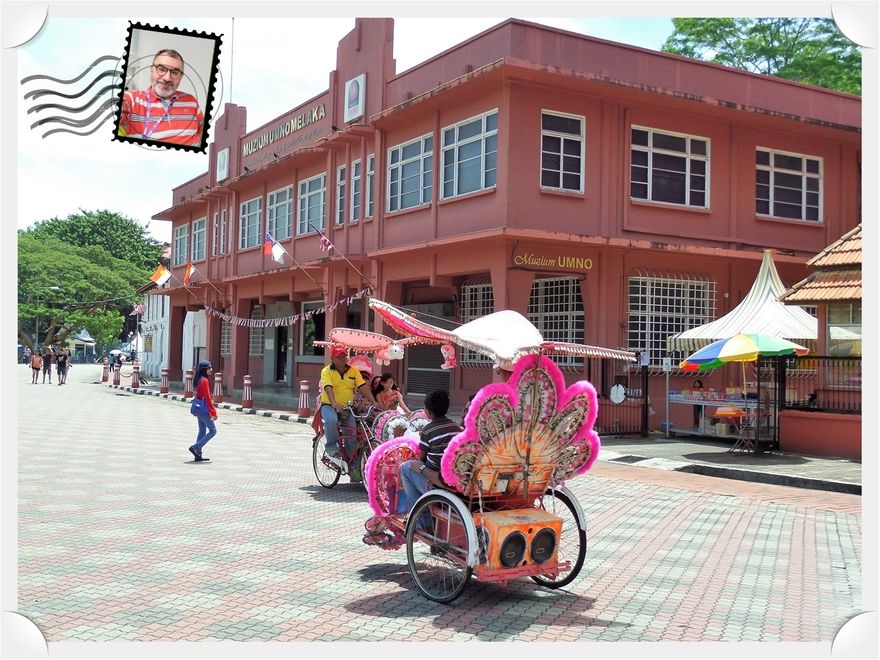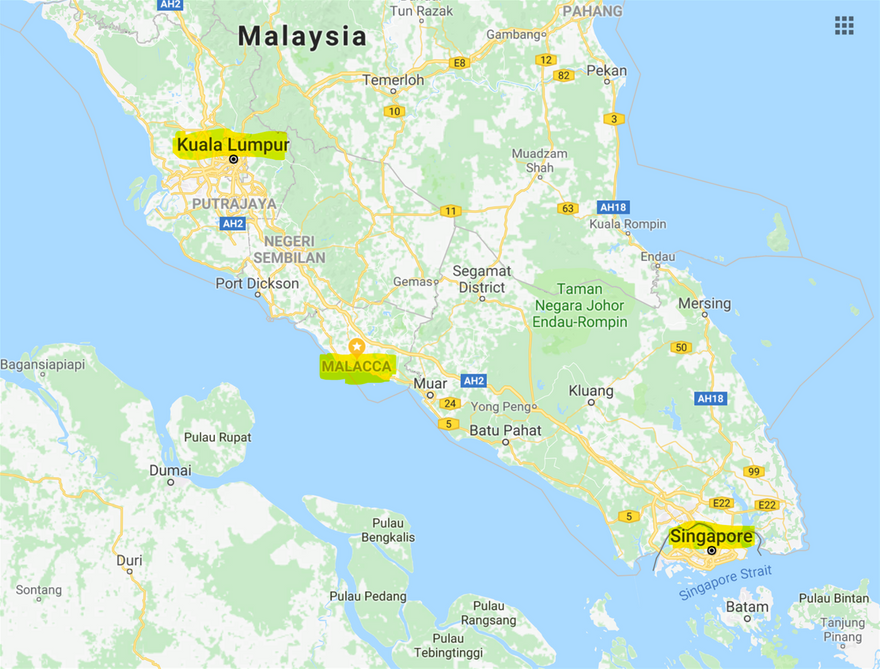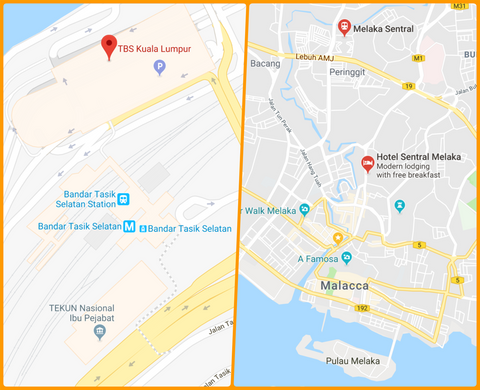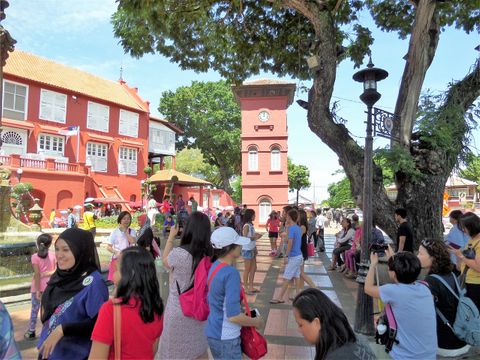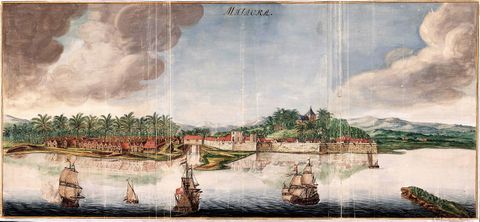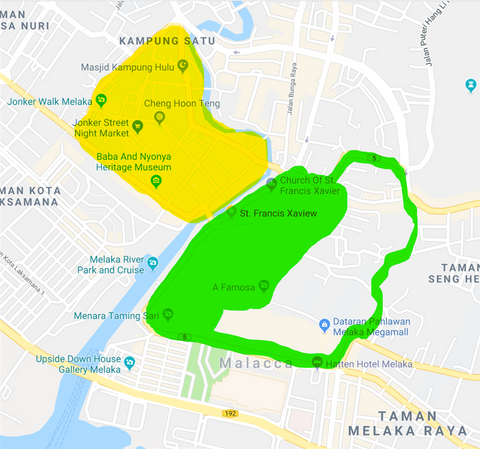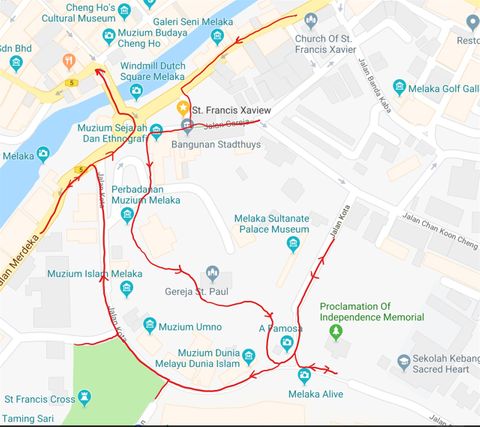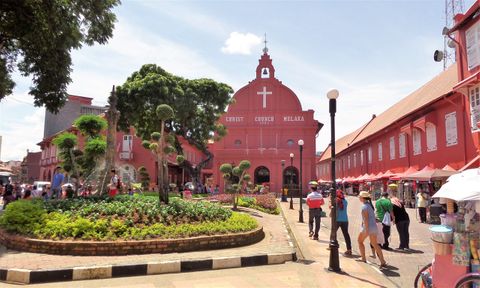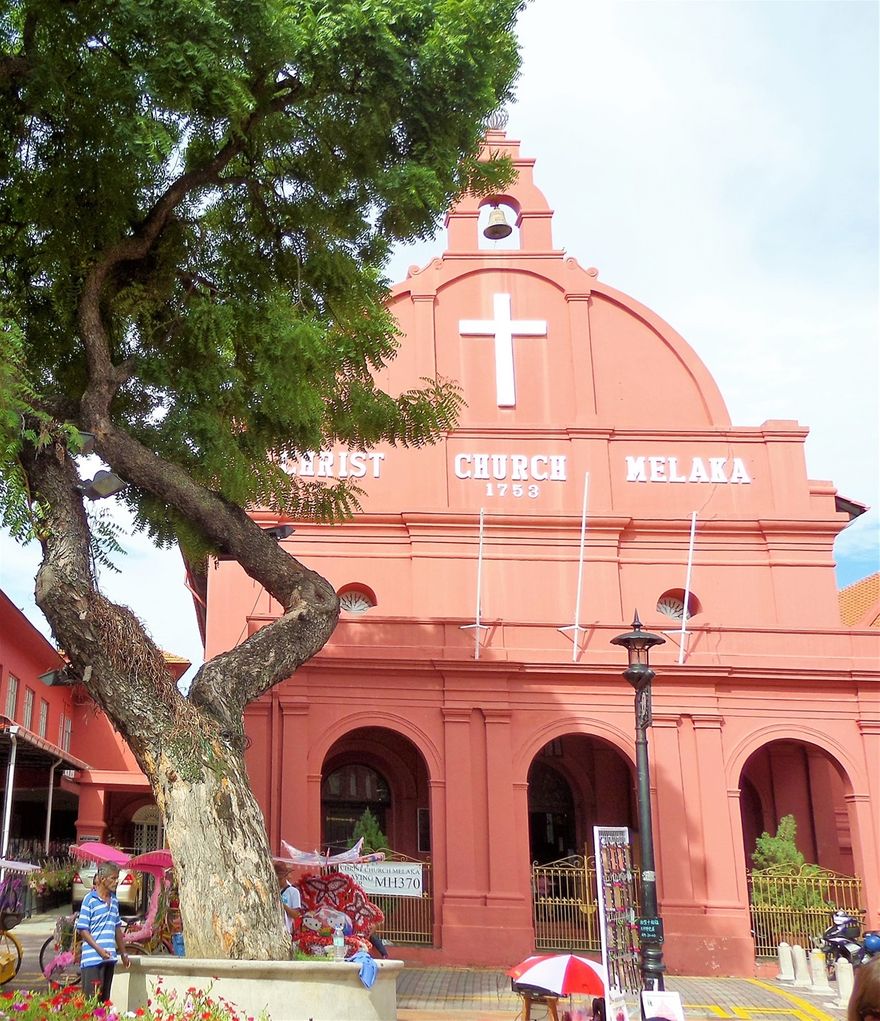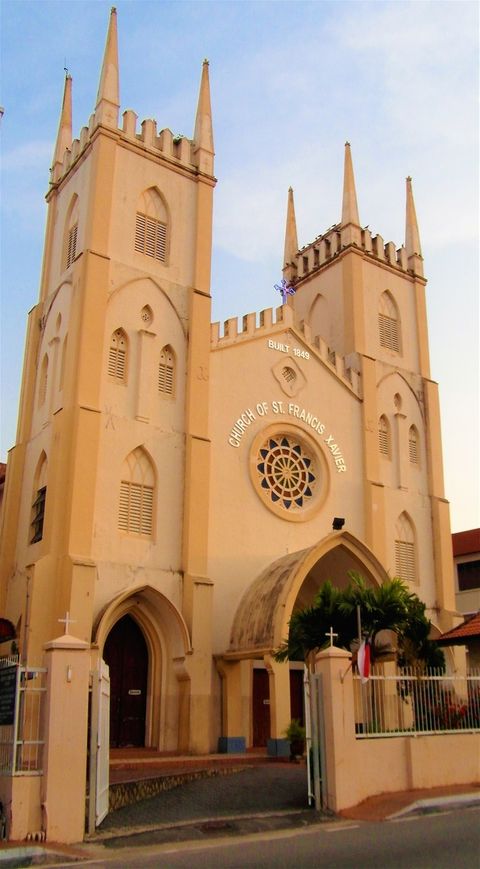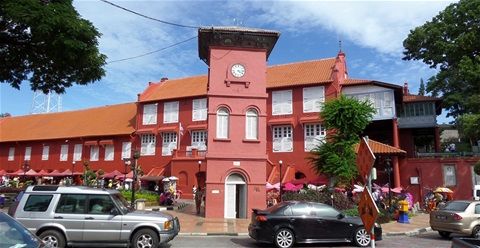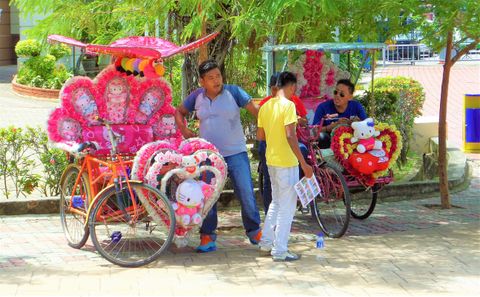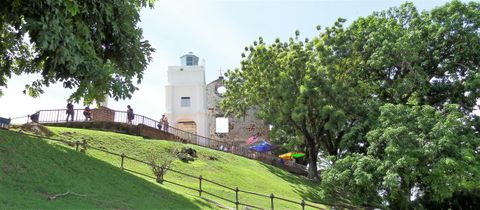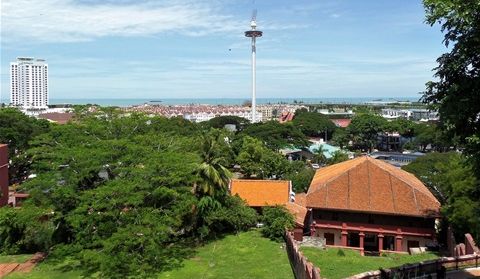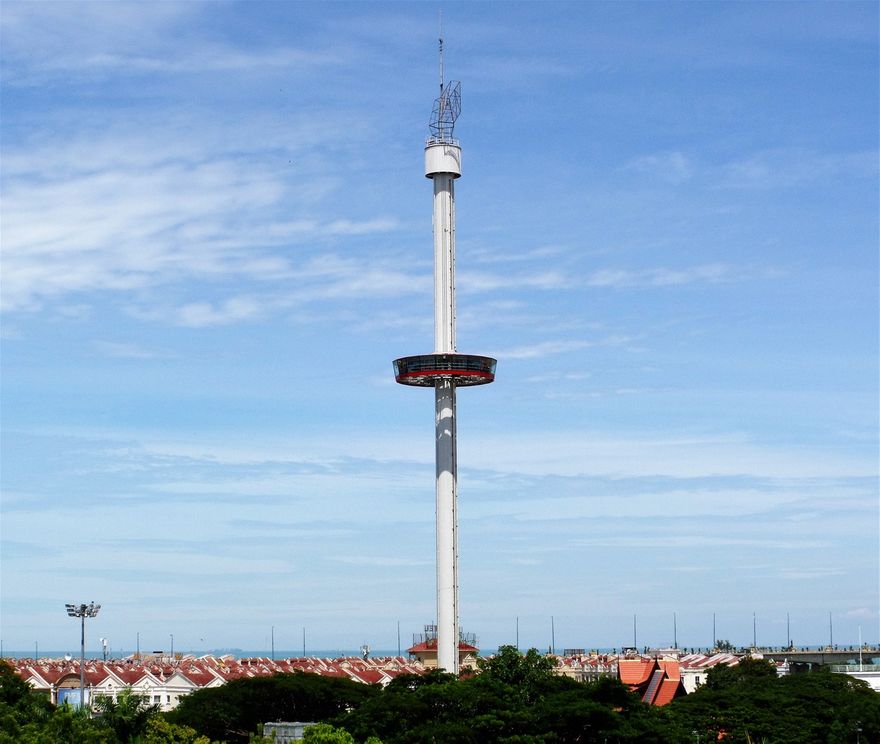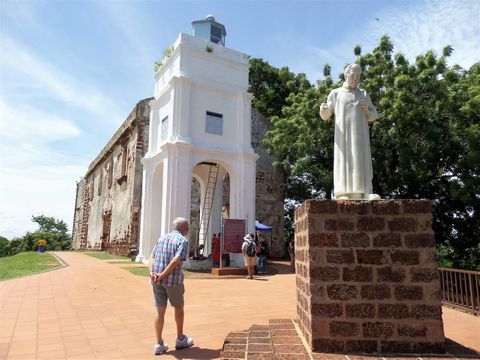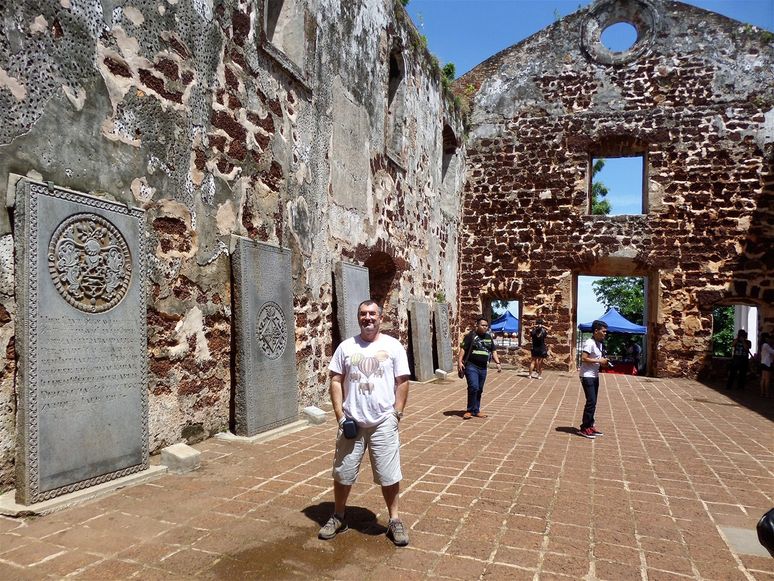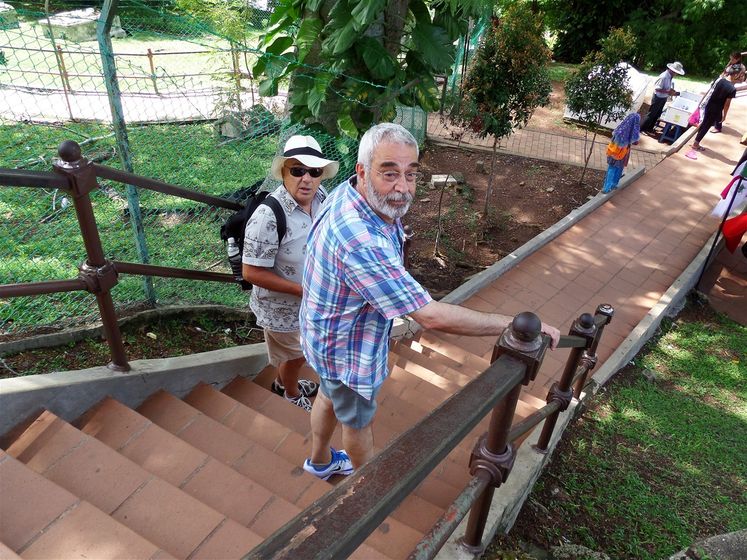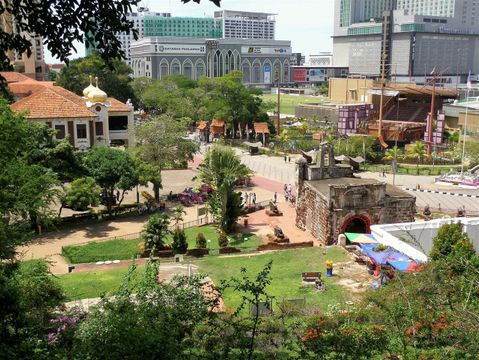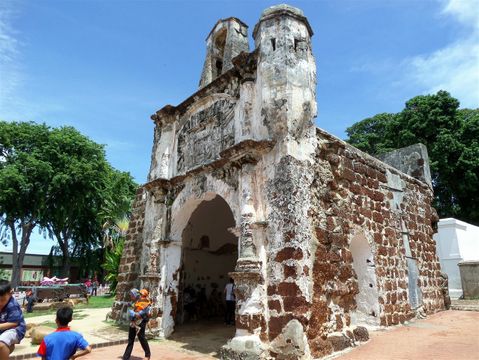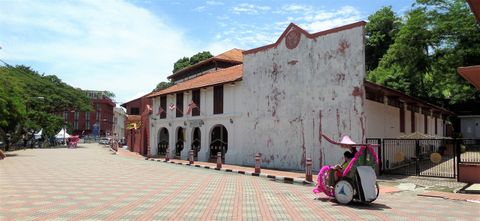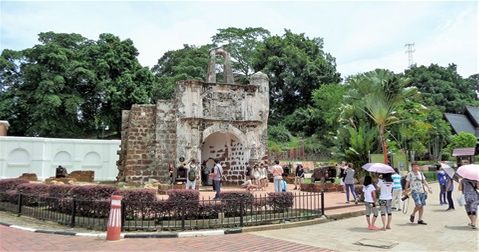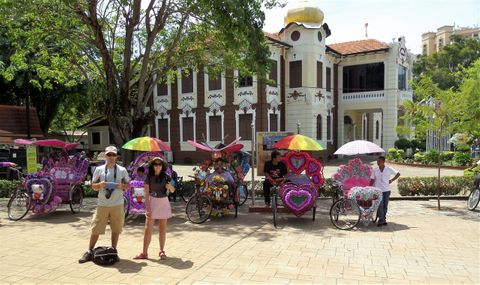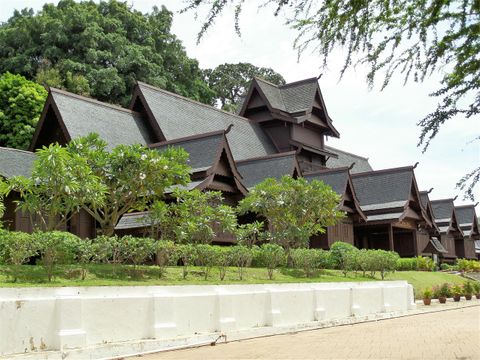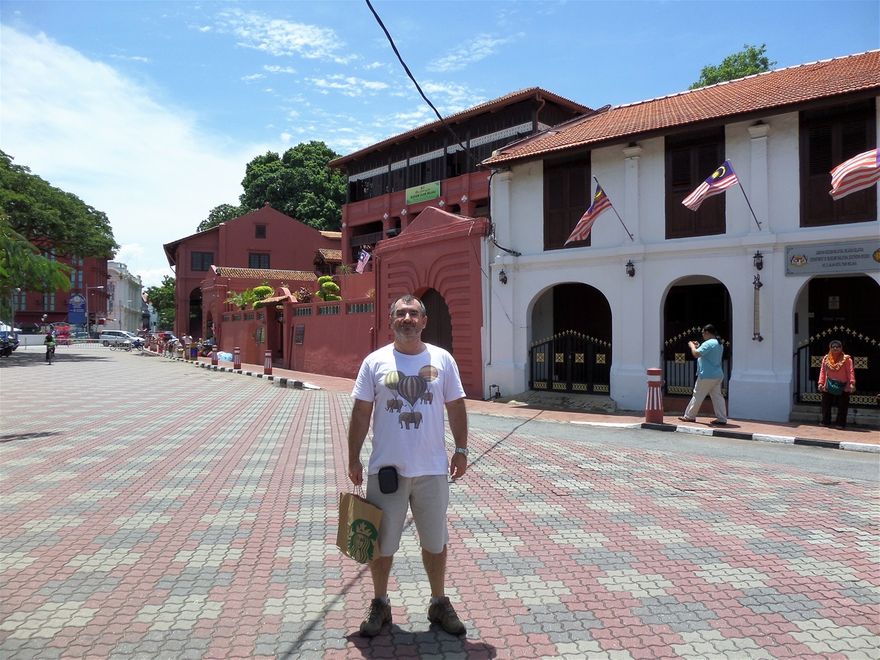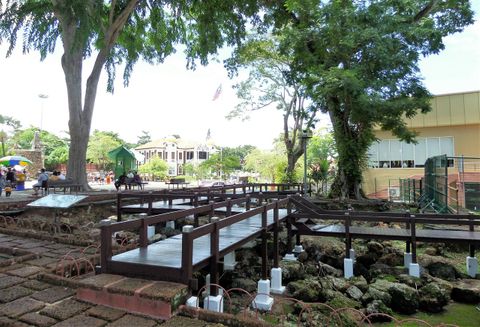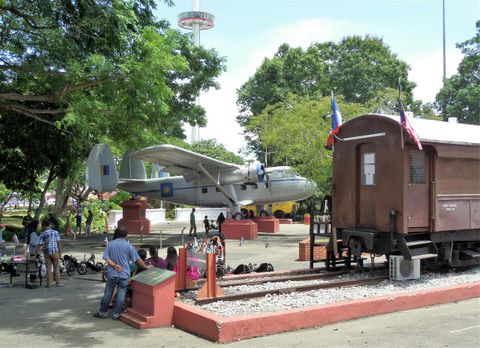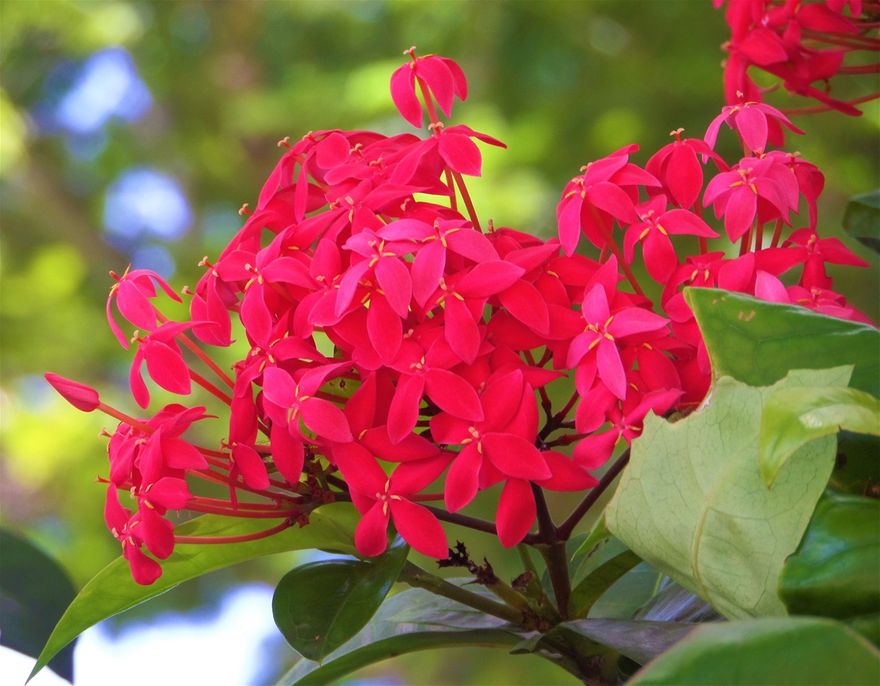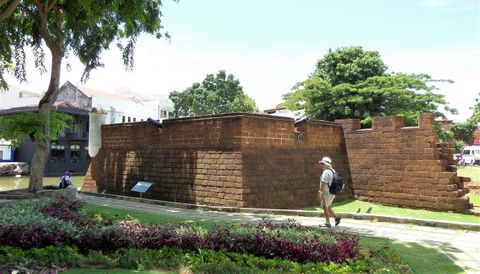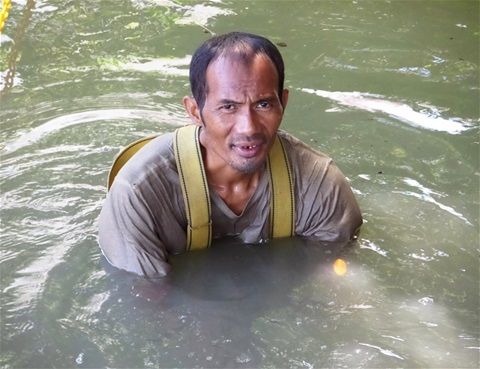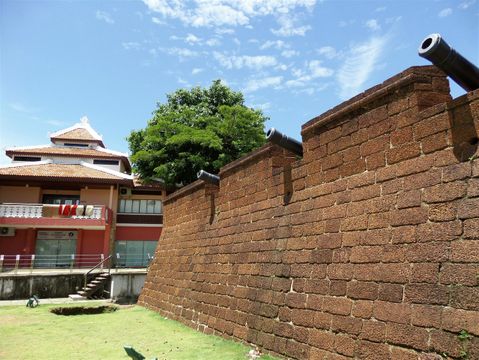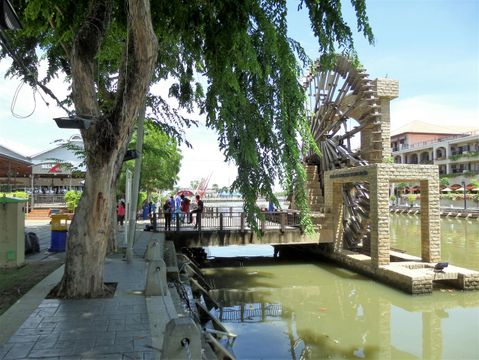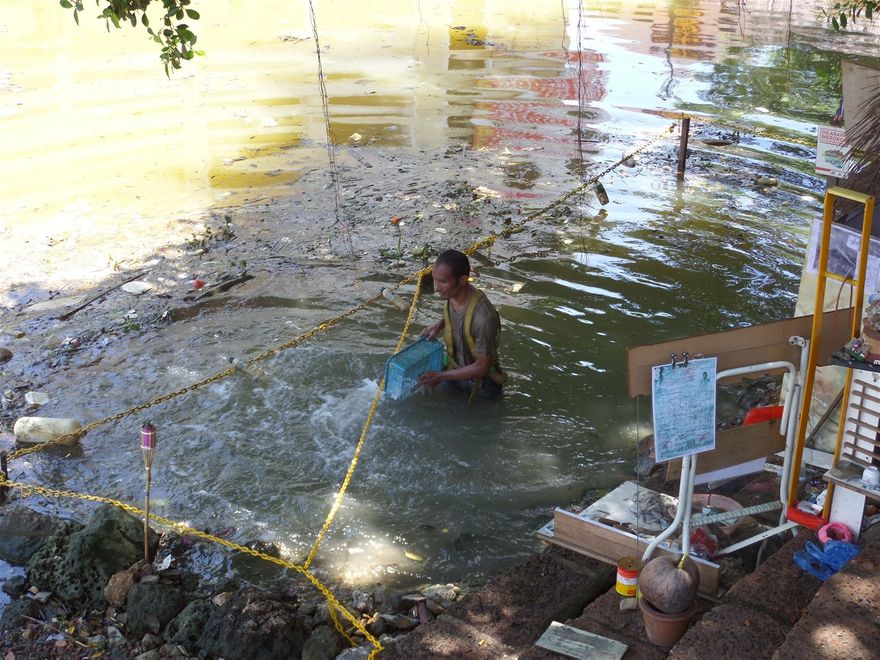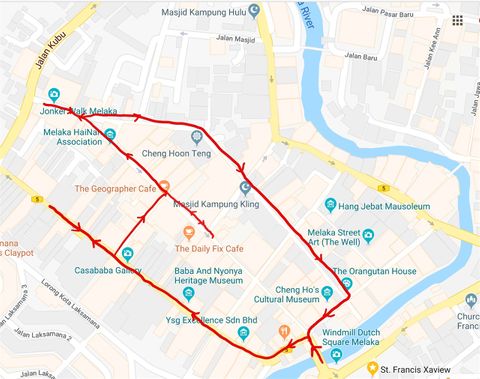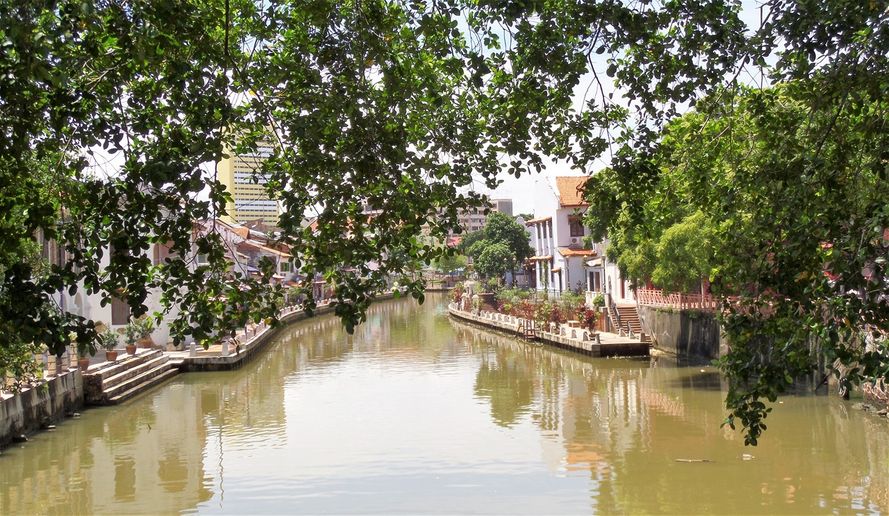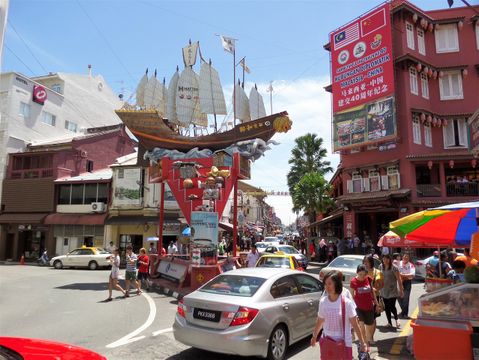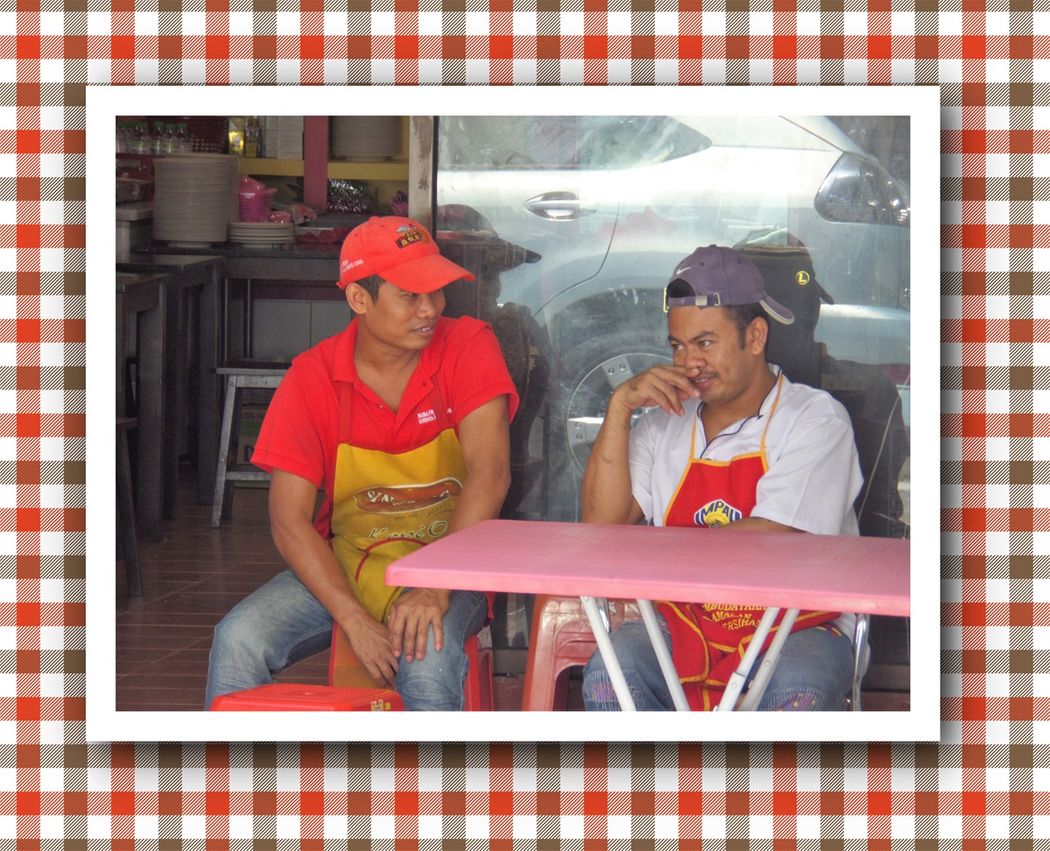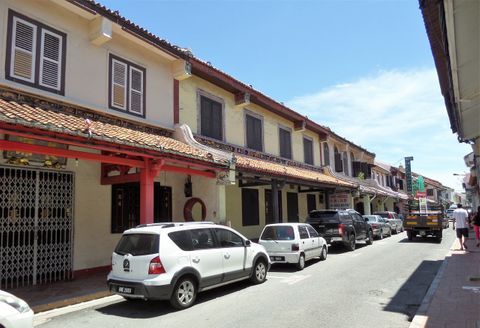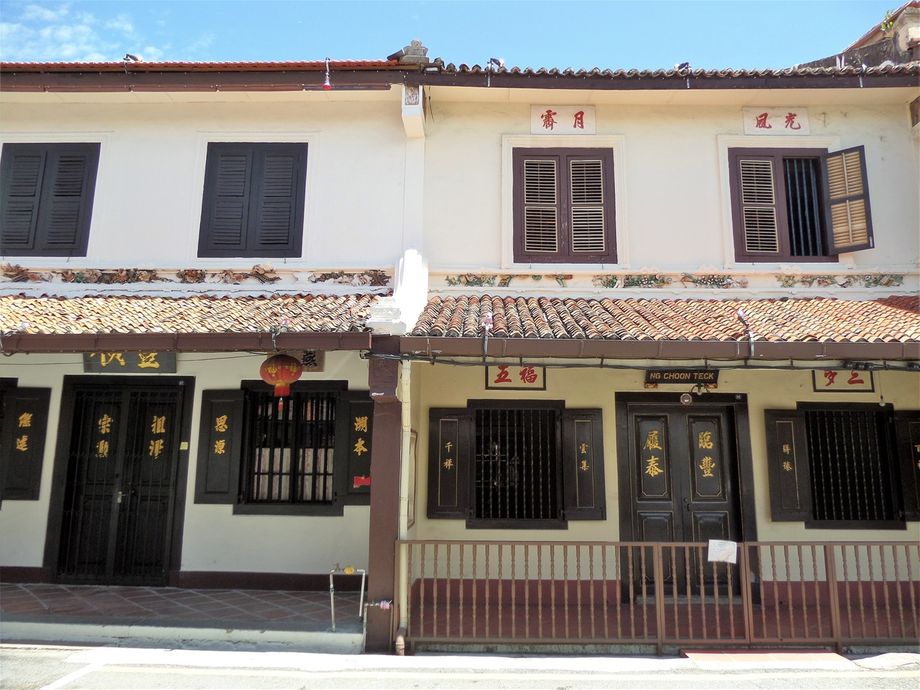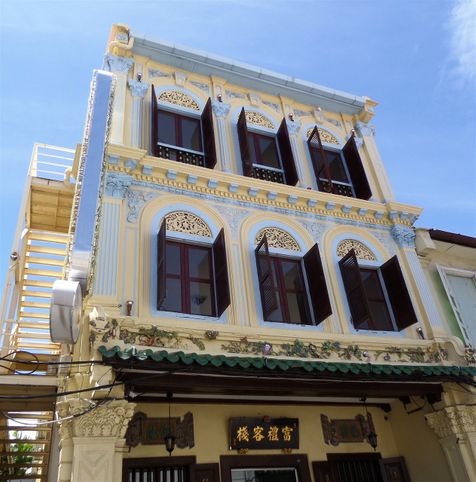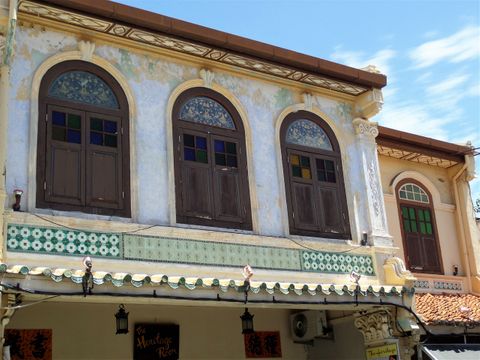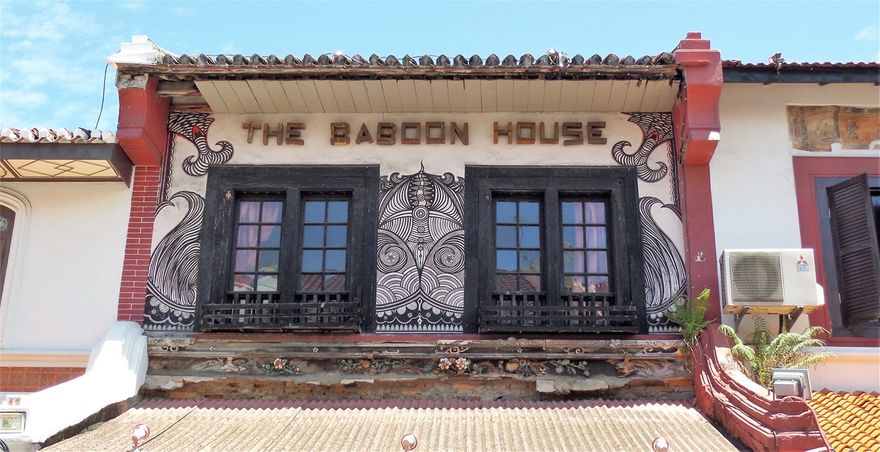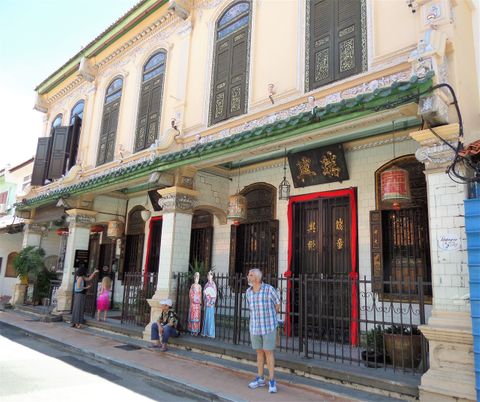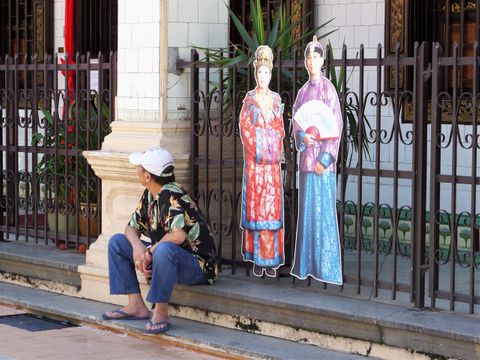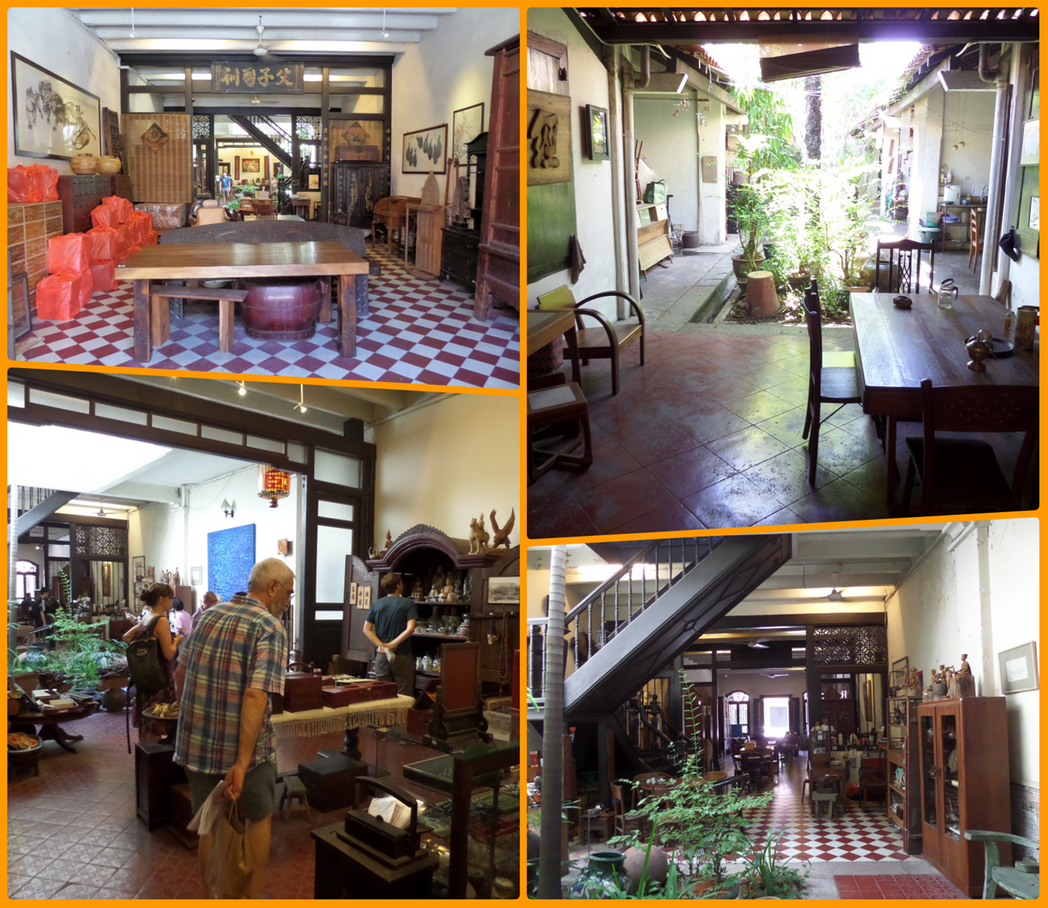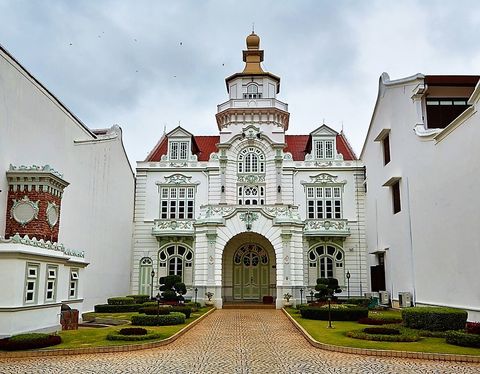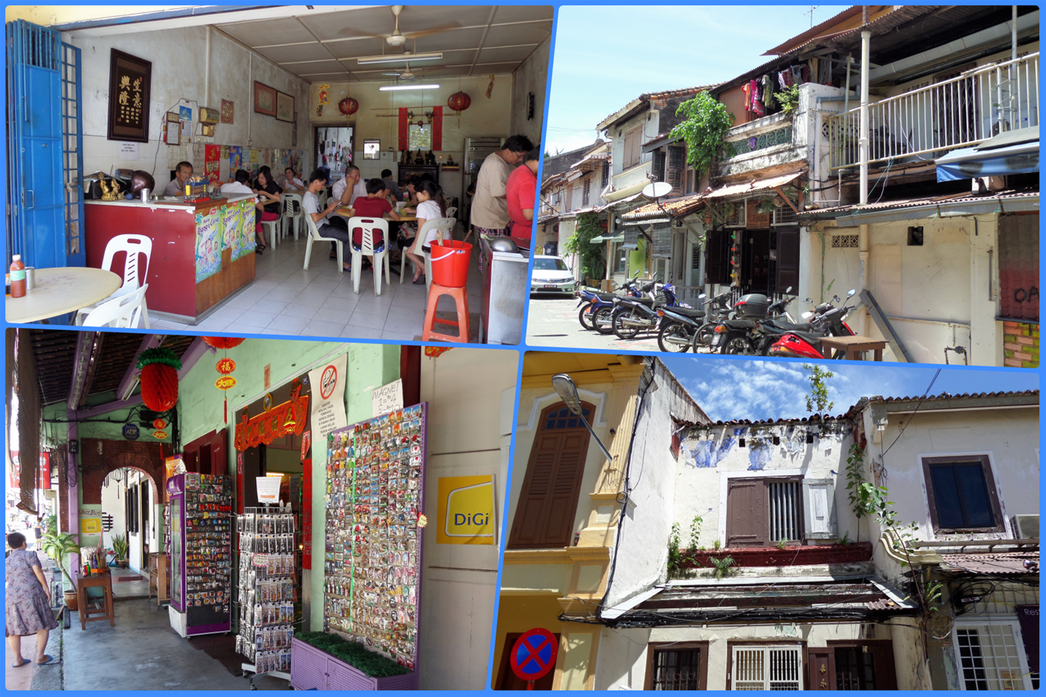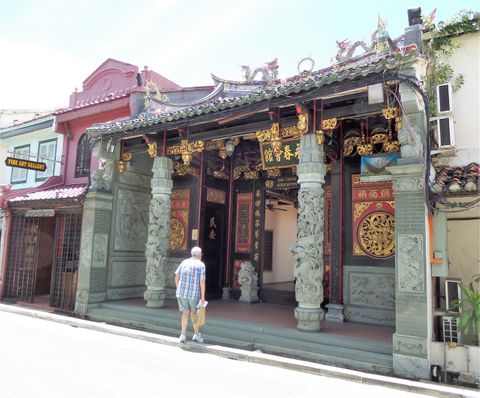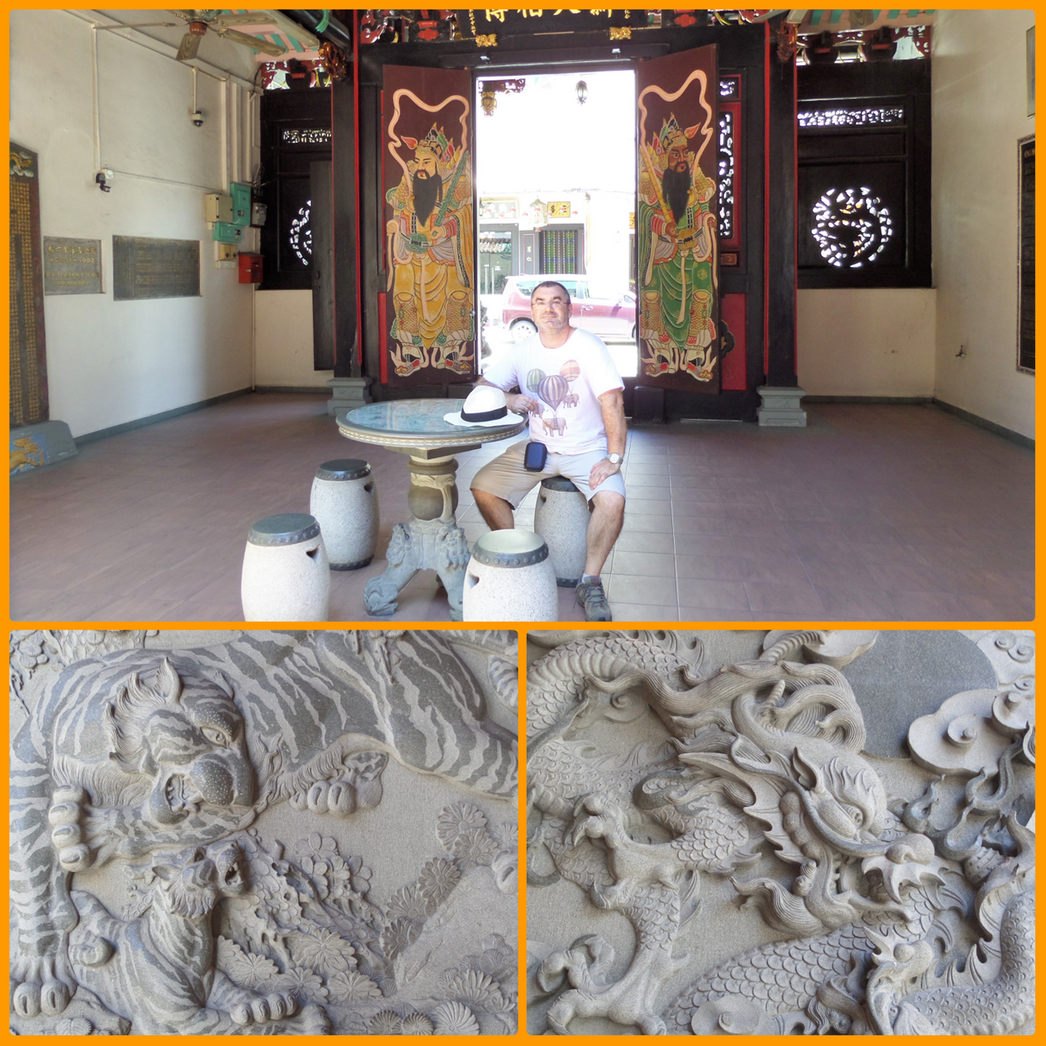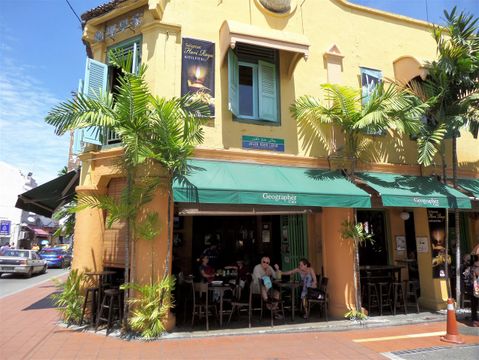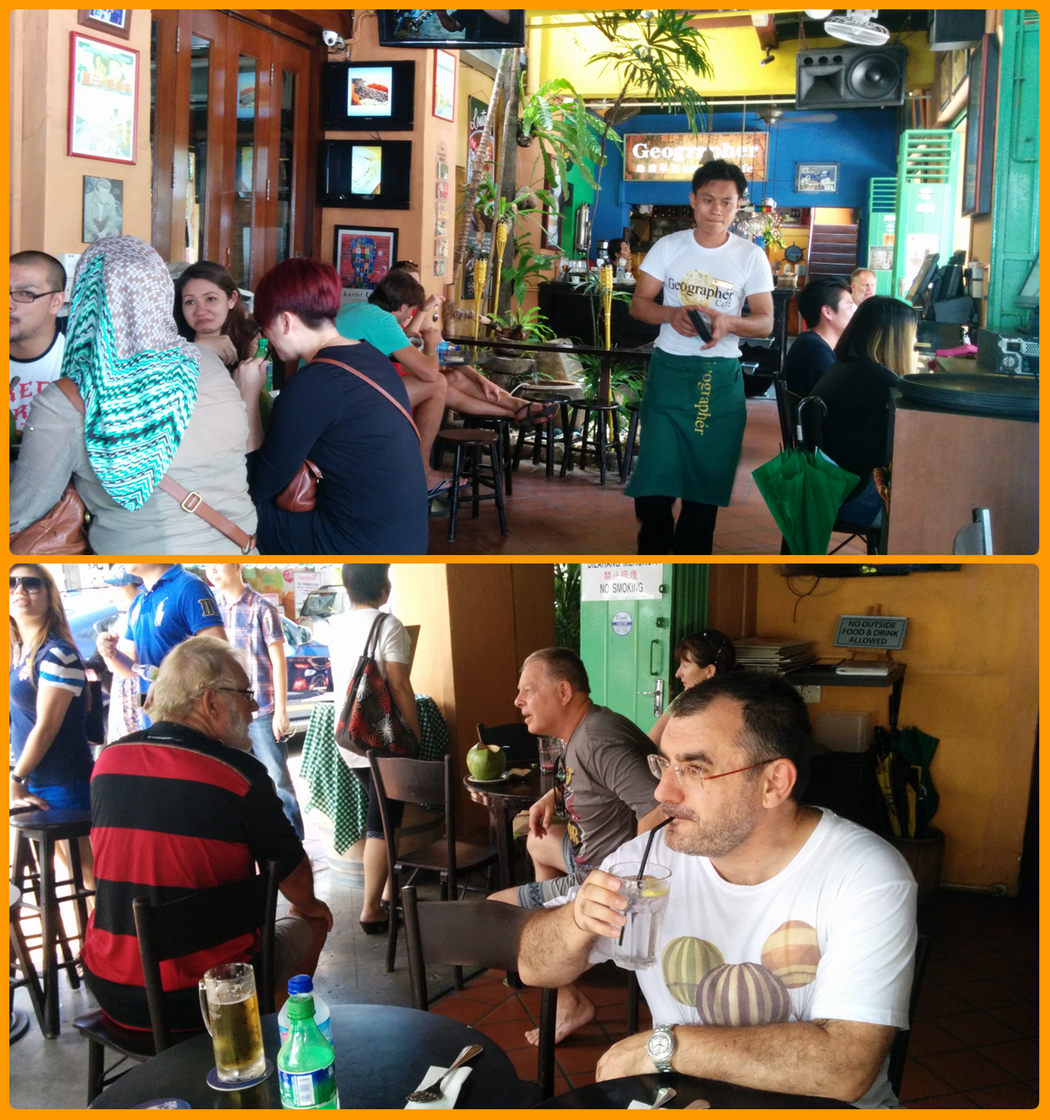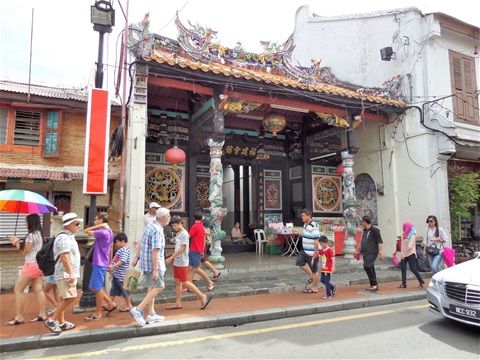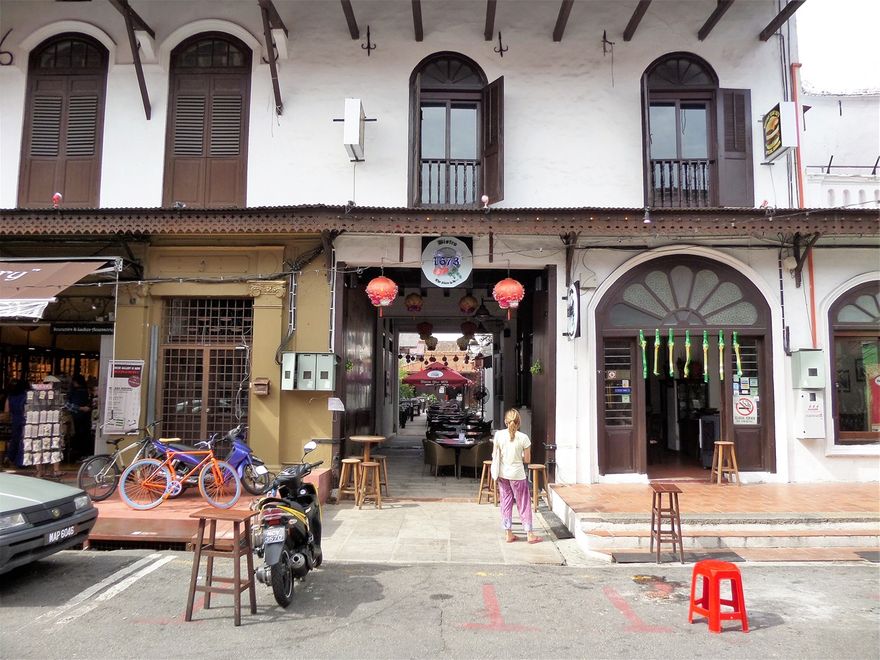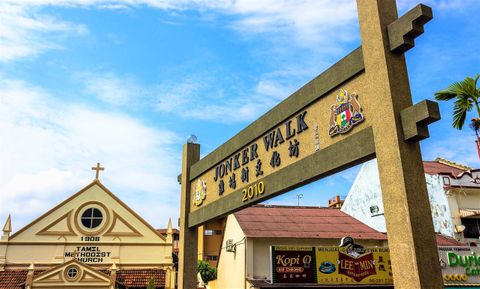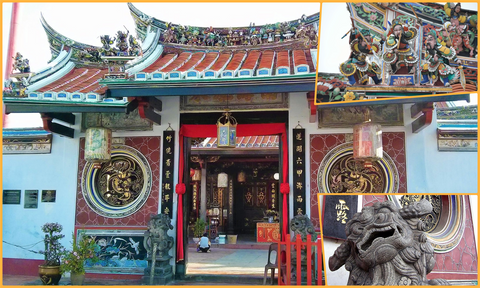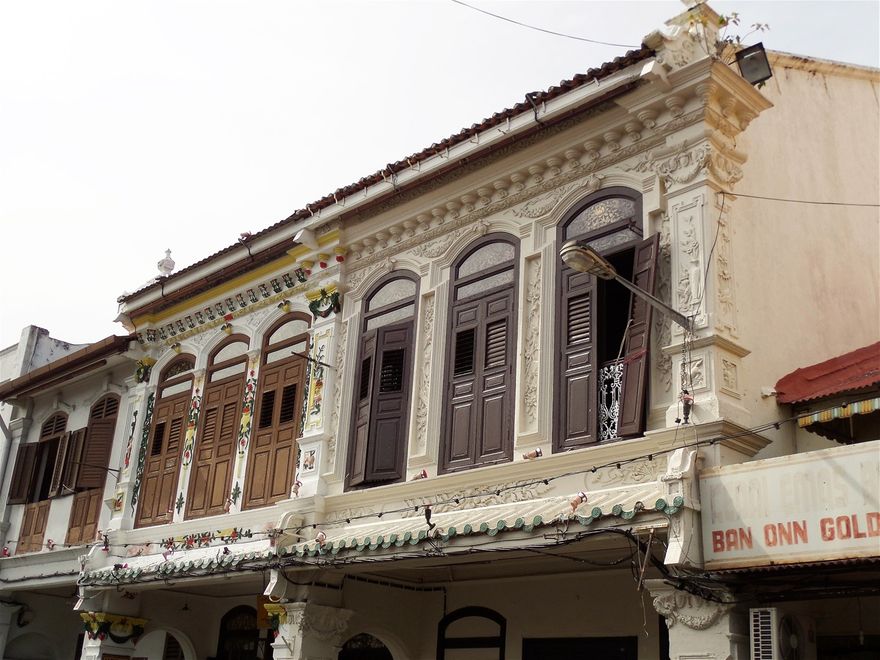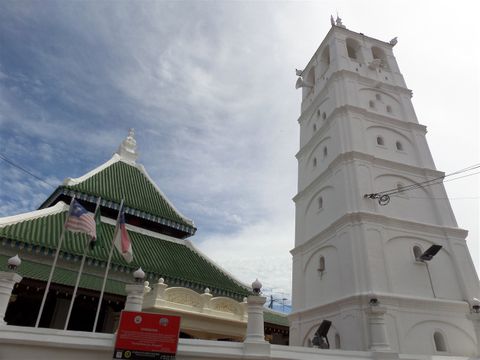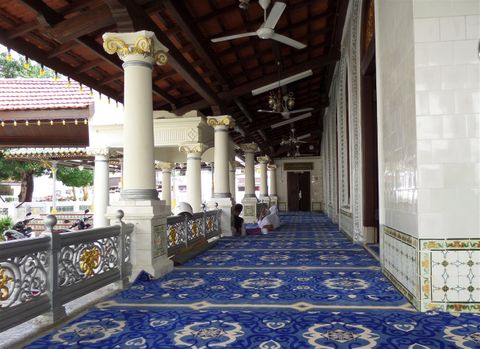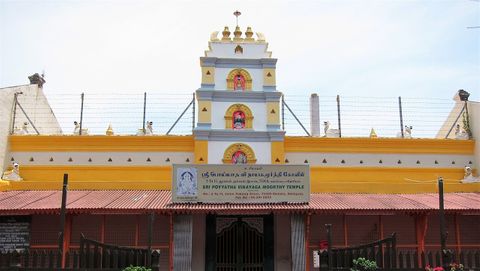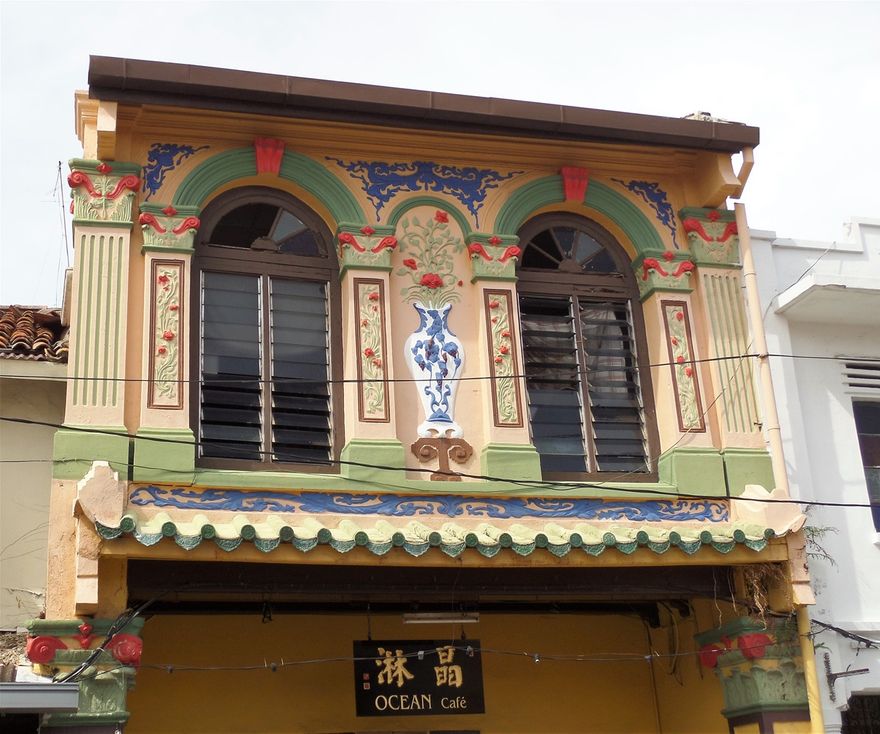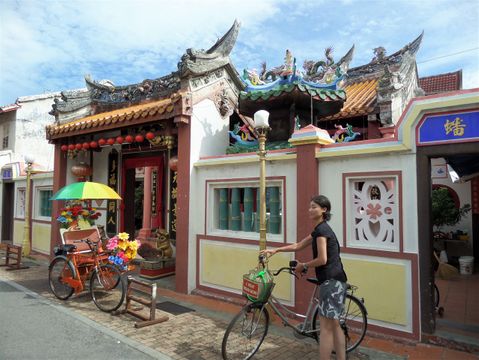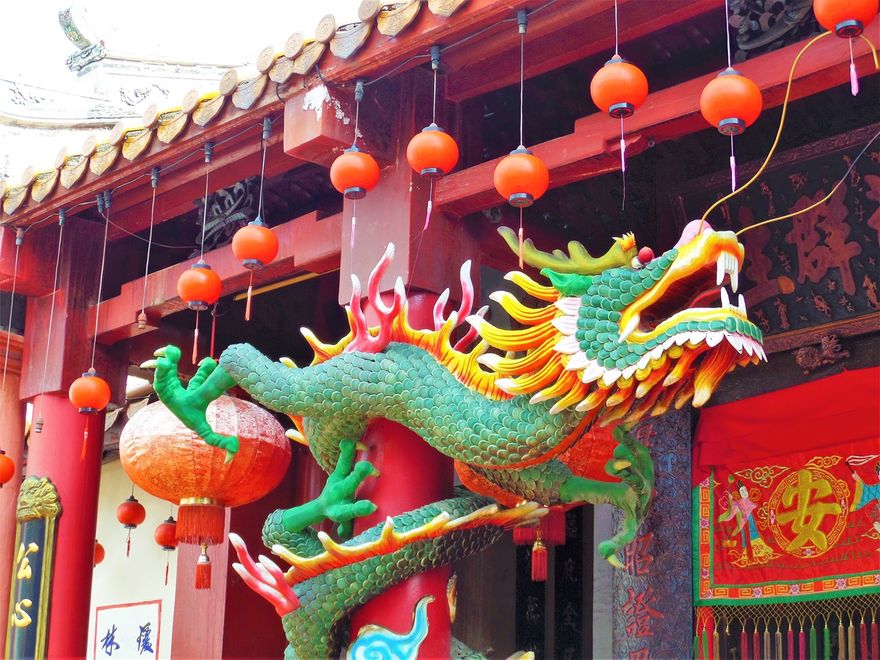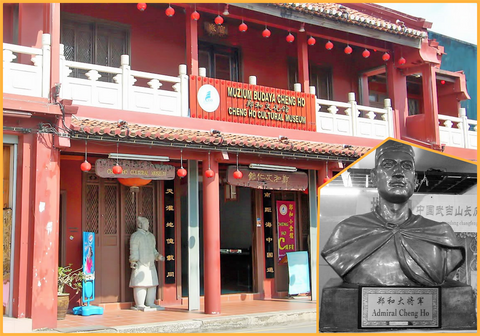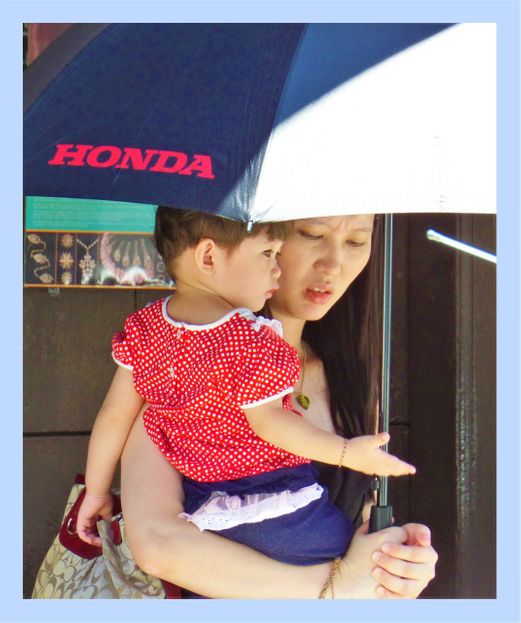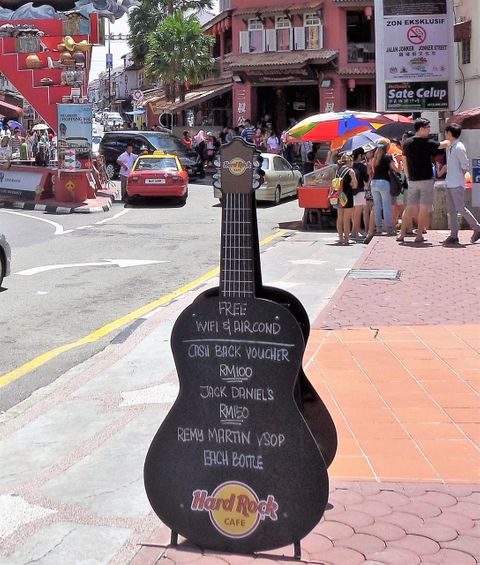Malacca (Melaka)
Malacca on the map.
Arriving at Malacca
TBS Kuala Lumpur (left) and Melaka Sentral (right).
The Bus station is set up sort of like an airport, therefore it is easy to navigate around. First you have to buy your ticket or collect your bus boarding pass if purchased a ticket online. There are many bus companies that go to Malacca, I just took the first available. Prices vary from 10 to 15RM. Follow the signs to your boarding gate. The bus ride should take anywhere from 2 hours to 2 hours and 40 minutes, depending on traffic.
Most buses going from Kuala Lumpur to Melaka terminate at Melaka Sentral, which is quite some distance to the touristic part of the city (Dutch Square). To go there you either take a taxi or the public bus. The bus picks up passengers from Gate #17 and in about 20 minutes you are at your destination (fare 2 RM).
The best and cheapest way to go to Malacca from Kuala Lumpur is to take the bus from the TBS Station (Terminal Bersepadu Selatan also called Bandar Tasik Selatan). TBS is a modern bus terminal that services almost all of the bus trips heading south of Kuala Lumpur. You can arrive there on the train/metro. I recommend that you take KLIA Transit from KL Sentral to TBS Station. There are other options (e.g. KTM Komuter, or LRT also go to TBS), but KLIA Transit is more reliable. Make sure you do not take KLIA Express, which does not stop at TBS.
Once you arrive at TBS Station, you will still have to make a short transit to the bus station. Simply follow the signs and walk to the bus station for about 5 minutes.
Dutch Square. The Malacca Clock Tower, is where the bus drops you off. From the same point you take the bus back to Melaka Sentral.
Orientation
A painting of Dutch Malakka fort, c. 1665
A quaint city with an abundance of breathtaking sights and rich heritage, Malacca is easy to get around on foot or on one of the multicolored, over-decorated trishaw to explore the many places that make it unique. As the unofficial historic capital of Malaysia, Malacca’s most prominent contribution to the Malaysian cultural landscape is the Baba-Nyonya or Peranakan culture. Possessing an eclectic blend of customs, traditions, food and lifestyle, the Peranakan still thrives in Malacca with a mix of old and new with historical buildings standing side by side with ultra-modern shopping centers.
The Malacca River divides the old city into two parts: the European colonial settlement located around a small hill on the east and the Chinese quarter unfolding on both sides of Jonker Street (Jalan Hang Jebat street), on the west. “Maleka 0 Mile” (Melaka Tengah 0 Batu) is the epicenter of the city (a roundabout today, with beautiful flowers, a sign with listed city distances, and white deer sculptures), while the adjacent bridge over the river is the connecting element of the two quarters.
The Chinese quarter on the west (yellow color) and the European on the east (green color)
European colonial settlement
A proposed trail of the European colonial part of the city.
The Dutch Square.
Malacca is a big city of over half a million inhabitants. Even the center of the city, where all the tourist attractions are, is quite big and certainly cannot be covered in a day trip from Kuala Lumpur. Consequently, be prepared to visit only the most proclaimed charms of the city. I present here roughly the itinerary I trailed during my day trip, which though made me love this rich of history and culture city.
We start our itinerary from the most prominent place in the old city: the Dutch Square, also known as the Red Square, as all buildings around it have a deep red color. Specifically, start from the Tourist Information Center, which is located at Maleka 0 Mile, next to the bridge.
The Dutch Square is an area surrounded by Dutch buildings such as the Stadthuys and the Christ Church, British monuments as the Queen Victoria's Fountain, and the Chinese settlers structure of Tan Beng Swee Clock Tower in honour of a generous late Chinese tycoon, Tan Beng Swee. The original clock tower was imported from England but has since been replaced with the one from Japan.
The facade of Christ Church.
Church of St Francis Xavier.
The Stadthuys
The Christ Church is located directly opposite the History and Ethnography Museum, along Jalan Gereja street, a pleasant street, full of souvenir shops and restaurants.
When the British took over Malacca, they added a weathercock and a bell to Christ Church and transformed it from a Protestant church into an Anglican one.
Entrance into the Christ Church is free.
A bit further up stands the Church of St Francis Xavier, a Gothic Revival building (1856–1859) with 2 spires, which was modeled after Montpellier Cathedral.
A lot of tacky, colorful trishaws line up for the tourists in and around the square. They are decorated with long feathers, teddy bears and fake flowers. The lucky customers can enjoy their ride listening to loud, distorted music playing from old loudspeakers.
Trishaws waiting for the lucky tourists.
The Stadthuys (City Hall in Dutch) was built by the Dutch between 1641 and 1660 as the office of the Dutch Governors. This massive bright terracotta-red building is supposed to be the oldest remaining Dutch historical building in the Orient. Since 1982, the Stadthuys is home to the History and Ethnography Museum. Among the displays in the museum are traditional costumes and artifacts throughout the history of Malacca, which makes it Malacca's premier museum.
St. Paul's Hill.
Get out of the Stadthuys from the back door, take the path to the right (that passes between two museums: Perbadanan Muzium Melaka and Muzium Pemerintahan Demokrasi), and start climbing a steep flight of stairs to the top of the green hill.
At the summit of St. Paul's Hill are the ruins of St. Paul’s Church (Sao Pao), built in 1521 by the Portuguese on the site of the last Malaccan sultan’s palace. Initially the chapel was dedicated to the Virgin Mary and was known as the Nossa Senhora da Annunciada (Our Lady of the Annunciation). The chapel later enlarged and became a fortress after gun turrets were added. In 1590, a belfry tower was added to the front of the church and it was renamed Igreja de Madre de Deus (Church of the Mother of God).
After the Dutch conquest in 1641, the church was badly damaged, but later reconstructed and renamed St. Paul’s Church. The church remained in use as a Protestant church till the completion of Christ Church in 1753. After that, St. Paul’s Church fell into neglect. The British, after the Malacca occupation in 1824, used it as a powder storehouse.
Today, the church, regardless of being roofless, is an attractive place. From there one has great views over Malacca and can enjoy the only place in the city where the cool breeze relieves you from the tropical sun and the high humidity of the tropics. Entertainers (owners of tropical birds, monkeys and reptiles to take pictures with) and souvenir stalls at the top of the hill complete your enjoyment.
Melaka Menara Taming Sari opened in 2008 as the first and only gyro tower in Malaysia. Measuring 110 meters in height, its revolving structure offers a 360-degree panoramic view of Malacca town and beyond. Able to accommodate 80 people per viewing session, which lasts about 7 minutes, the glass cabin hypnotically revolves as it rises from the ground to the top of the tower.
Saint Francis Xavier statue in front of St. Paul’s Church and the white lighthouse added much later by the British.
St. Paul’s Church is associated to Saint Francis Xavier as he was a regular visitor here. Following his death, off the coast of China on Shangchuan Island in 1552, his body was temporarily entombed in St. Paul’s Church burial vault, before being transferred to Goa where it remains till today. To this day St. Paul’s Church maintains St. Francis Xavier’s temporary tomb.
In 1952, a marble statue of St. Francis Xavier was erected in front of the ruins of the church in commemoration of the 400th anniversary of his sojourn in Malacca. A day after the statue was consecrated, a large casuarina tree fell on it, breaking off its right arm. Incidentally, the right forearm of Xavier was detached in 1614 as a relic.
Inside the church, at the burial vault, intricately engraved tombstones which belong to Dutch nobility that were buried here, are lining the walls.
Climb down the steps to reach the other side of the hill, where A'Famosa's Porta de Santiago stands.
Inside St.Paul's roofless church.
Fellow travelers going down the St.Paul's Hill.
A’Famosa (on the right). Proclamation Of Independence Memorial seen at left.
Porta de Santiago.
Wary of maintaining the fort, should it fall into enemy hands, the English ordered its destruction in 1806. Fortunately, Sir Stamford Raffles (founder of Singapore), who was visiting Malacca in 1810, stepped in before the complete destruction of the old fortress. It was a close call though and the crumbling remains of Porta de Santiago were all that could be salvaged from total destruction.
Just opposite of the Porta de Santiago stands the Proclamation Of Independence Memorial, a 1911 building, which today houses a memorial museum for artifacts related to nation's fight for independence.
Take the road between the Porta and the Proclamation building. In less than 100m, you find yourself at the Melaka Sultanate Palace, which is a wooden replica of Sultan Mansur Shah’s 15th-century palace. The palace was painstakingly constructed in 1985 using traditional construction techniques and materials, based on 16th century archives.
Sultan Mansur Shah’s seven-tiered palace was built entirely without nails and supported with carved, wooden pillars and featured a copper and zinc roof. The palace destroyed the year after the sultan ascended the throne when it was struck by lightning.
Today, the palace houses the Muzium Kebudayaan (Cultural Museum).
Jalan Kota street.
Built in 1511, A'Famosa was a settlement sprawling across a whole hillside on the east of the river. Today, only one gate remains, the Porta de Santiago.
One of the oldest surviving European architectural remains in Asia, A'Famosa is perhaps Malacca’s best-known sightseeing spot. Originally constructed by Alfonso de Albuquerque (who led the Portuguese invasion on the Malacca Sultanate) to house the entire Portuguese administration, including its hospitals, five churches, elongated stockades and four key towers. The rest of the bastion comprised of townhouses clustered inside the fortress walls. The fort was expanded in 1586 to accommodate Malacca’s growing population. A'Famosa and Macau were the two most important Portuguese outposts in Asia.
In 1641 the Dutch gained control of A'Famosa from the Portuguese and drove them out of the city. What remains is largely the Dutch reconstruction as they carried out renovation works in 1670. Today you can see the small inscription "ANNO 1670" on the fort’s arch as well as the coat-of-arms of the Dutch East India Company. In the early 19th century, A'Famosa changed hands again when Malacca fell into British hands.
The Proclamation Of Independence Memorial.
Muzium Kebudayaan.
Start going back to Dutch Square by walking on Jalan Kota street. Jalan Kota is a beautiful street with elaborated colonial mansions at the foothills of St.Paul’s Hill, which today house several museums: Muzium Dunia Melayu Dunia Islam (Bastion House), People's Museum, UMNO Museum, Melaka Islamic Museum and Malaysia Architecture Museum.
Me at Jalan Kota street.
Just opposite the Bastion House and next to the entrance of a big shopping center, there is an excavation site exposing parts of A’Famosa. Pop into the Shopping center to cool down with a Starbucks cold drink. I had fun at this Starbucks, as for some reason the employees of the cafe were so excited with me and we took lots of pics together.
Next to the excavation site, there is a big park with an exposition of old trains and airplanes. Enjoy the thick shade of the huge trees, walk around the exhibits, see the St Francis Cross. The Saint Francis’ reputation as a miracle worker is legendary. One story about him goes like this: when he was travelling to Malacca in the year 1546, he run into some bad weather. He dipped his cross into the sea and pacified the bad weather but he lost his Cross. When he arrived ashore, at this very point of the city, crabs from the deep sea came out and handed the cross back to him! Malacca locals believe this miracle and take it as gospel and they say that the crabs, distinctly having what appears to be a cross on their shell can only be found in the area, “proof” they say that it wasn’t a myth. Some of them refrain from eating these crabs out of respect for their beloved saint.
A’Famosa relics.
An open air museum of train and airplanes.
If you have time, get off course and go up the Menara Taming Sari for a 360-degrees view of the city from above.
Bastion Middleburg.
After the fall of Melaka from the Portuguese to the Dutch on 14 January 1641, new measures were taken to ensure the safety of Melaka. The Dutch fortified the walls of Melaka city, which further strengthened the existing city’s defenses left by the Portuguese. The fortification of the city’s walls involved the building of a bastion or control tower strategically located at the mouth of Melaka River, the focal point for trade and stopover for international ships. The building of a bastion, known as Middleburg was carried out in 1660.
On the river quayside, it is worth visiting the Maritime Museum (Muzium Samudera) housed into two buildings, one of which is shaped like a huge ship replica. Continue north on Jalan Merdeka and visit Bastion Middleburg next to the Tourist Information Center.
Bastion Middleburg and the back side of the Tourist Information Center.
The Water Wheel.
There is a café just before the bastion, as well as a huge water wheel.
The replica of Melaka Malay Sultanate Water Wheel, as it is known, was built in 2008, based on technology found from Syria to China.
When we visited, in the waters in from of the bastion, there was a man diving and searching for old artifacts, more like small chips of pottery and metal objects.
This is the end of your trip on the European colonial part of old Malacca.
Chinese Quarter (ChinaTown)
Leave behind the Portuguese, Dutch and British colonial architecture and enter into another world, that of the Chinese orient. You just have to cross the river and everything changes around you. Directly after the bridge, there is a little roundabout and a sign which welcomes you to JonkerWalk, that is the Jonker Street extravaganza.
A proposed walk around Chinatown.
River malacca, from the bridge leading to Chinatown.
The entrance to JonkerWalk.
Jonker street, which official name today is Jalan Hang Jepat, is the central street of Chinatown and was once renowned for its antique shops.
Over the years, Jonker Street has turned to clothing and crafts shops as well as restaurants and bars. The best part of Jonker Street is the night market on Fridays and Saturdays that sells everything from tasty treats to cheap artifacts and tacky souvenirs. Unfortunately, if you are here for a day trip only, you will not be around during night to enjoy one of the most famous night markets in SE Asia.
Break time.
Instead of entering the Jonker street, at the roundabout, I turned directly left on Lerong Hang Jebat st. and then left again on Jalan Tun Tan Cheng Lock st. (previously known as Heeren Street), which is the most picturesque street in the Chinese quarter. Beautifully decorated and restored two-storey houses, little shops and art galleries, souvenir shops and mansions with cool, shady, inner courtyards. One such mansion houses the Baba & Nyonya Heritage Museum.
Jalan Tun Tan Cheng Lock street.
Typical Jalan Tun Tan Cheng Lock houses.
Rich three-storey Jalan Tun Tan Cheng Lock house.
At the beginning of the 16th century, merchants and entrepreneurs were lured to Malacca’s shores due to city’s burgeoning success and wealth. In particular. the city saw an influx of Chinese traders who arrived in hordes in an effort to escape Manchu rule.
These entrepreneurs went on to marry local Malay women and their descendants are known as Peranakan or ‘Straits-born Chinese’. Their relative success resulted in these expatriate merchants becoming the principal wealth catalysts of the thriving city. The ‘Babas’ (male Sino-Malays) flaunted their affluence by purchasing Dutch townhouses and transforming them into palaces. The interiors of these homes were opulent and stuffed to the top with Dutch-influenced fixtures including hand-painted tiles and Victorian lamps.
Yet Peranakan culture as a whole is largely defined by its cuisine – Nyonya. Malaysians laud it as one of their major food heritages and Malacca’s culture is irrevocable defined by it. An amalgamation of Malay and Chinese traditions, Nyonya cuisine comprises dishes with vegetables, curries thickened by coconut milk and sauces that are delightfully pungent. Noteworthy though is the social etiquette of eating – locals use their fingers, not chopsticks, to eat – a fact that belies their Chinese ancestral roots and establishes Nyonya culture as one of Malaysia’s veritable legacies.
Typical Jalan Tun Tan Cheng Lock houses.
Decorated Jalan Tun Tan Cheng Lock house.
The Baba-Nyonya Heritage Museum.
The entrance of the museum is framed by Greco-Roman columns, two red lanterns, one bearing a household name and the other messages of good luck, hang on either side of it.
The upper level of the house has a short canopy of Chinese tiles above the portico which frames the almost-Venetian shuttered windows. Boasting distinctively east-meets-west allure, the glass windows feature wrought-iron grilles and the eaves and fascias are covered with painted, floral designs. Inside the house there’s a collection of gold-leaf fixtures, Chinese and Dutch-design black wood furniture inlaid with mother of pearl as well as skillfully carved lacquer screens and Victorian chandeliers.
The Baba-Nyonya Heritage Museum is actually a collection of three beautifully restored houses arranged to look like a typical 19th-cenutry Baba-Nyonya residence. Excellent examples of Chinese-Palladian style, these townhouses, built in 1896, were transformed into a traditional Peranakan museum in later years; connected by a common covered footway, the museum features hand-painted tiles, elaborately carved teakwood outer swing doors and a sturdier internal door which provides extra security.
Outside Baba-Nyonya Heritage Museum
Inside the Baba-Nyonya Heritage Museum.
Chee Ancestral Home.
Further up the street, there are two other fine examples of Peranakan-style homes: the Malaqa House and the Straits Chinese Jewelry Museum. The museum exhibits furniture & jewelry from the Straits culture.
Somehow different than all the other buildings in the street is Chee Ancestral Home. This white-washed, neoclassical mansion is a blend of Dutch, Portuguese, Chinese and English styles. Chee Mansion, also called Chee Yam Chuan Temple, built by Chee Swee Cheng, who was born in 1866, in a family which was one of the richest and oldest in town. Chee who became a tycoon in his own right, served as the first chairman of the Overseas Chinese Banking Corporation.
Around Jalan Tun Tan Cheng Lock.
Opposite of the Chee Ancestral Home you cannot miss the impressive entrance of the Eng Choon Association.
The Chinese form clan associations where all members come from the same family or province. This goes back to the days where entire kingdoms in China were built from the same family.
Eng Choon Association is a clan association for the Chinese immigrants in Malacca who originated from the Eng Choon District of Fujian Province in China. Among the members of this association are the family of Tan Beng Swee and Tan Kim Seng. The clock tower in the Malacca Town Hall was erected by Tan Kim Seng in memory of his father Tan Beng Swee.
Entrance of Eng Choon Association.
Inside Eng Choon Association.
The “Geographér Café”.
Walk some meters backwards and enter the narrow street Jalan Hang Lekir. This is a street of bars and restaurants, and at the end of it (at the intersection with Jonker street) stands my favorite bar: the “Geographér Café”.
This corner pre-war shophouse, right in the heart of Chinatown, is an eatery whose warm ambience reflects the gracious old charm of the seasoned traveler and truly maintains the tradition in a place where East meets West. Have something light to eat and drink lots as the tropical heat wears out even the most determined traveler. Do not forget to buy a special Geographer souvenir.
Inside the “Geographér Café”.
Leave the Geographér Café, turn right toward the river and follow Jonker Street for some 100m to visit Hokkien Huay Kuan Temple. This temple in Jonker Street is a feast to the eyes and the exterior of this well-restored historic clan house beckons the passers-by. A pair of symmetrical pillars with dragon relief graces the front porch, beyond which the eyes are instantly arrested by a striking set of door and wall panels with intricate carvings and bold colors. Two rows of Chinese characters frame the entrance door, composing a poignant eulogy to the achievements of the clan and its members. Once inside, an ancient scene comes alive instantly. The large ancestral house is a wonder of Chinese architectural styles, customs and relics.
Hokkien Huay Kuan Temple
The interior of the temple offers little to see but the entrance area is well worth a quick stop. The entrance is very well decorated, featuring the expected dragon and tiger murals and a most interesting pillar arrangement, both being scaled by dragons.
"Bistro year 1673", at the lower part of Jonker street.
The western entrance to JonkerWalk and the Tamil Methodist Church.
Continue on Jonker street towards the west end of it. Enjoy the beautiful buildings and among them the Melaka HaiNan Association building, the Kwan Yin Tang Temple and the Tamil Methodist Church.
When you reach the western Jonker Walk gate start your trip back following Jalan Tokong street. Actually, Jalan Tokong and Jonker streets intersect forming an acute angle which is occupied by a multicolored building, the Jonker Center Stage. This is a restaurant and bar, but the front porch functions also as a concert stage.
Jalan Tokong (Harmony Street) known for its collection of religious shrines, features important attractions and buildings. The most important of them all is the «religious triptych» comprising a Buddhist (Cheng Hoon Teng), a Muslim (Masjid Kampung Kling Mosque) and a Hindu (Sri Poyyatha Vinayaga Moorthy) Temple.
Cheng Hoon Teng Temple was founded in the 1640s by the Chinese Kapitan Tay Kie Ki (alias Tay Hong Yong). During the Portuguese and Dutch eras, Kapitans were appointed chiefs or headmen of the various ethnic communities. In its early years, besides serving the community's religious needs, the temple also functioned as the official administrative center and a court of justice for the Kapitans. Kapitan Chua was responsible for rebuilding the temple in 1801 and contributed towards the aesthetic and structural additions of the building. In 1824, the British abolished the Kapitan system and the leader of the Temple, now known as "Teng Choo", assumed some of the Kapitan's responsibilities.
The entrance of Cheng Hoon Teng Temple.
Cheng Hoon Teng's architecture reflects the skills of migrant builders and craftsmen from China's southern provinces, mainly Fujian and Guandong. The building conforms strictly to the principles of feng shui, incorporating the fundamental belief that every aspect of life is closely related to attaining perfect harmony with nature. According to granite tablets, the temple was carefully laid out to ensure a view of the river and high ground on either side. While the Cheng Hoon Teng is representative of the more peasant Southern temple form there are features that depart from the usual Southern temples found in Malaysia. Its roof slope attempts to attain a steeper incline than the generally lower and flatter Fujian form. The two flag masts are of dramatic height, beckoning attention. The temple has three bays rather than one found in most temples, whilst most of the columns are not circular and are in timber rising from stone bases. Here there is an extensive use of lacquer. All these elements indicate the uniqueness of this architectural masterpiece.
To the locals, the temple is also known as Kebun Datok (Gods' Garden) and Kwan Yin Teng.
Typical houses in Jalan Tokong Street.
Kampung Kling Mosque.
The mosque also uses a combination of Chinese ceramic tiles as well as European and Portuguese glazed tiles to adorn its roof, the floor and the lower walls. In addition, the courtyard behind Kampung Kling Mosque contains a fountain-like pool for ablutions and covered circumambulation walkway. Moorish cast iron lamp-posts can also be seen in the place of ablution.
Sri Poyyatha Vinayagar Moorthi Temple is one of the first Hindu temples built in Malaysia. Opened in 1781, the rectangular-shaped temple is on a plot of land that was donated by the religiously tolerant Dutch and features a Dutch architectural style, and is dedicated to the elephant-headed Hindu deity Vinayagar (Ganesha).
Sri Poyyatha Vinayagar Moorthi Temple’s design features colorful and ostentatious stone carved statues and figures of animals and Hindu deities. With an exterior of Brahmin-blue paint, the temple is not as grandiose as Masjid Kampung Kling but the rectangular-shaped structure is still noteworthy. Check out the beautiful black stone sculpture of Vinayagar on the central altar.
Built by Indian Muslim traders in 1748, during the Dutch colonial era, the Kampung Kling Mosque is one of the oldest mosques in Malaysia which still retains its original design. The architectural design of the mosque seems to reflect Malacca’s colorful past as a major trading port during the 14th to 18th century as it combines influences from the Sumatran, the Chinese, the Hindu, the local Malay community and the European aesthetics.
Inside Kampung Kling Mosque.
Sri Poyyatha Vinayagar Moorthi Temple.
A building opposite Sri Poyyatha Vinayagar Moorthi Temple.
The entrance of Persatuan Sam Toh Tong.
Continue further towards the bottom side of Jalan Tokong street, and you will pass by a small but very beautiful chinese temple, Persatuan Sam Toh Tong.
Continue walking in the same street till you see a huge orangutan mural. At this corner turn right to enter Lorong Hang Jabat street. This is where you finish your walk around the Chinese quarter by visiting Cheng Ho's Cultural Museum.
Inside Persatuan Sam Toh Tong.
Cheng Ho’s Cultural Museum is a gallery housing exhibits about Chinese Ming Dynasty admiral, Cheng Ho. Opened in 2006, it is believed that the museum sits on the site of Guan Chang, a warehouse built by Cheng Ho about 600 years ago to temporarily store goods he acquired during his travels.
Cheng Ho was a famous explorer who made seven voyages to the Middle East, Africa and Southeast Asia between 1405 and 1433. Five of these voyages brought him through Melaka Straits, leading him to found Malacca’s port. Due to his role as a confidante to the third Emperor of the Ming Dynasty, his influence on Malacca had a significant impact on its regionally important role.
The entrance of Cheng Ho’s Cultural Museum and his bust (inlet).
Though Cheng Ho was influential in China’s international relations, he will most likely be remembered in Malaysia for his role in bringing the Emperor’s daughter, Princess Hang Li Po to marry the Sultan of Malacca in the mid-15th century. Her acquaintances, in turn, eventually intermarried with local Malaccans, creating the Baba Nyonya culture.
Well, you may want to relax and eat something at Hard Rock Café before you take a late bus back to Kuala Lumpur.
There is nothing special about this famous chain restaurant (except maybe its Straits Malacca-inspired patterned floor), but it is idyllically location on the shore of Melaka River.
The bus station to go back to Melaka Sentral is located at Dutch Square. Wait for it under the big tree, at the exact point it dropped you off earlier today.
Hard Rock Café advertising street board.

